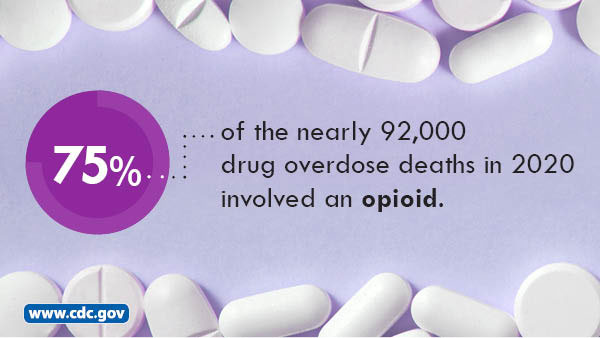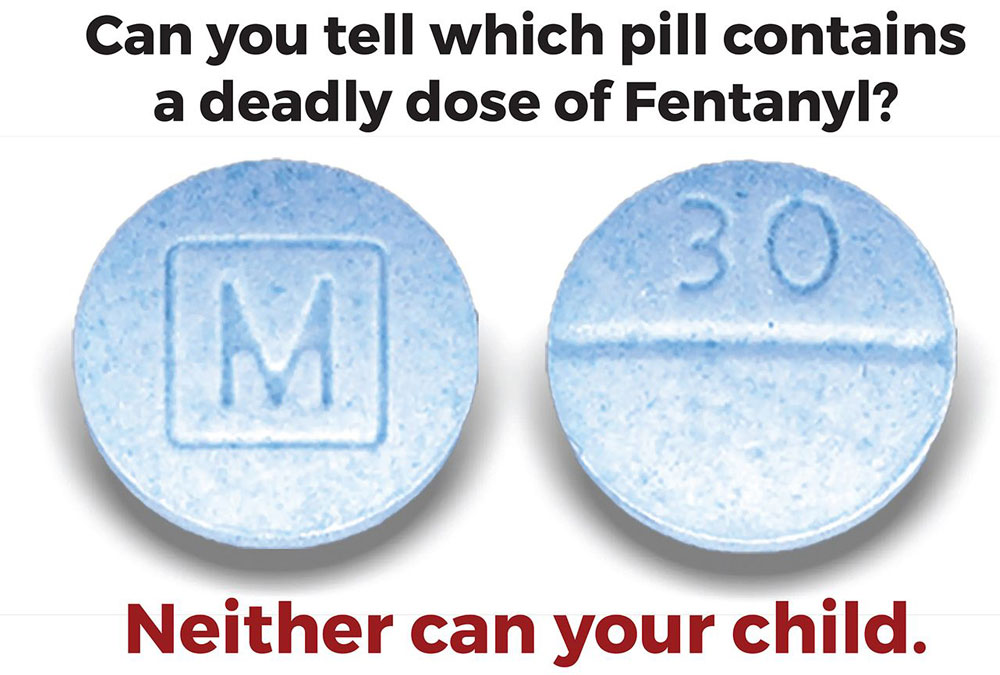Great strides have been made in the United States in recent years when it comes to cracking down on over-prescribing doctors and limiting illicit access to powerful opioid pain medications. Tighter regulations for drug manufacturers and criminal cases against shady, “pill mill” clinics have been effective to some extent in getting commonly prescribed medicines like hydrocodone and oxycodone off the streets. However, the nation’s opioid crisis is far from over.
It is more difficult than ever for would-be opioid traffickers to supply themselves directly through legitimate doctors and pharmacies. However, the nation’s opioid crisis is far from over. Unfortunately, these measures may be painting an inaccurate picture for those who interpret them as a turning tide in the greater war on opioid use disorder. The reality is that even with new regulations in place, overdose deaths from most prescription opioids and heroin have not fallen all that significantly over the last several years. Meanwhile, fentanyl deaths have skyrocketed.
What Is Fentanyl?
Fentanyl is a powerful synthetic opioid medication. Compared to morphine or heroin, its relative potency is sometimes estimated to be as much as 100 times stronger. However, estimates for the potency of illicit street-manufactured fentanyl are difficult to make. In fact, fentanyl’s strength is the primary factor that makes it so deadly.
Some people with opioid use disorder purchase fentanyl deliberately on the street or on illicit websites. Unfortunately, it is also sometimes cut into heroin or cocaine to increase the potency and cut costs for the manufacturer and distributor. It may also be used as a primary ingredient in counterfeit pharmaceutical pills. This, combined with inconsistent and unreliable suppliers, can be a recipe for disaster. Users accustomed to a less powerful opioid can easily take enough fentanyl to experience an accidental fentanyl overdose, whether they’re expecting fentanyl or a less-powerful illicit drug.
The True Power of Fentanyl
Fentanyl, like morphine, codeine, Vicodin, oxycontin, and several other popular prescription pain relievers, works by binding to the body’s opioid receptors. One difference is that fentanyl does this extremely well: as much as 50 to 100 times better than heroin, by some calculations. This means that the positive and negative opiate effects, like euphoria, pain reduction, constipation, and more, are much more powerful when taking fentanyl compared to the same dose of another synthetic opioid.
In medical settings, fentanyl is only used for extremely serious pain, such as in acute trauma situations or terminal cancer patients. Even then, it is used in very small amounts. For example, some popular manufacturers make morphine pills in 15, 30, and 60-milligram doses, while oxycodone from the pharmacy might come in 5, 10, 15, and 30-milligram pills. The typical medicinal dose of fentanyl, meanwhile, is 100 micrograms, which is only one-tenth of a milligram.
Illicit fentanyl and similar drugs, such as Xylazine (tranq), are often many times stronger than prescription fentanyl. While it can be imported from other countries, it can also be created both legally and illicitly in the US. Today, it is at the forefront of the discourse around the public health crisis we’re facing with opiates and opioids. It is now safe to say that the center of the opioid epidemic has shifted; where there was once a prescription pill proliferation problem, we now have a fentanyl crisis in its place.
Current Fentanyl Stats
At the beginning of the decade, fentanyl overdoses even overtook COVID-19 as the number one killer of adults aged 18 to 45.

Fentanyl Facts and Fiction
Stories about sinister criminals sending fentanyl to random addresses in the mail and police overdosing from merely being exposed to fentanyl powder in a suspect’s pocket have not helped the culture of fear and severe social stigma associated with fentanyl use. Such stories are often exaggerated and are frequently urban legends entirely.
These bizarre tales persist even though many seriously sick and injured patients safely use fentanyl for medical purposes every day as prescribed by a doctor. Sadly, these public misunderstandings about fentanyl can prevent bystanders from attempting to administer aid to someone experiencing an opioid overdose.
In reality, today’s current iterations of fentanyl cannot be absorbed through the skin in sufficient quantities to intoxicate someone incidentally. Even a transdermal fentanyl patch (a medical device specifically designed to dose the medicine through the skin) requires hours of direct contact to transfer a therapeutic dose of the medicine. Even then, one dose would not be fatal to a healthy adult.
The addiction and long-term health risks of fentanyl, on the other hand, cannot be overstated. Fentanyl is an extremely powerful opioid. It is 50 to 100 times stronger than pure morphine and is comparable to no other opioid drug on the market, legal or otherwise, in terms of pure potency. This strength is what gives fentanyl its serious potential for abuse, addiction, and fatal overdose.
What to Do If You Know Someone with a Fentanyl Problem
When someone is suffering from the immediate effects of a fentanyl overdose, the correct course of action is to alert emergency medical services. Then, administer Narcan (naloxone) if available, and render any other first aid you are qualified to give. It can also be helpful to try to remain verbally engaged with the overdose victim to keep them as focused and coherent as possible until emergency medical help arrives.
As a more lasting remedy, individuals struggling with a fentanyl problem should seek treatment at a reputable rehabilitation program with a variety of treatment options. A focus on opioid use disorder is key. Also helpful are dual diagnosis services and a variety of whole-person therapeutic approaches so that they can find what works best for their own individual journey.
Fentanyl in Arizona
Like every US state, Arizona has experienced its own unique front in the nationwide war on fentanyl. As a border state, the politics and logistics of drug enforcement policy can sometimes look quite different in Arizona versus other states. To begin, a sizable portion of the state’s population, including Yuma and Tucson, lies within the 100-mile border enforcement zone, making it a special federal jurisdiction. This can have significant implications for drug cases.
Today, fentanyl is the single most common substance linked to opioid overdose deaths in Arizona and has claimed victims as young as 14 years old in the state. As in many other regions of the United States, Arizona fentanyl is often not sold as fentanyl at all but instead comes to end users in the form of an undisclosed ingredient in street drugs like heroin, meth, cocaine, or counterfeit pain pills.
This covert status makes fentanyl even more dangerous. Someone who believes they have a high tolerance for cocaine, for example, might easily overdose by using a large amount of cocaine that has been cut with fentanyl without their knowledge.
Recently, one form of fentanyl has become a major concern to communities in Arizona. The blue “M30” pill is a fentanyl pill designed to look like a legitimate 30 mg oxycodone pill, a drug with a higher street value than fentanyl due to its consistency and quality. It is believed that these counterfeit M30 pills are being pressed in Mexico and trafficked into the United States by criminal organizations.
The first record of these pills appearing in Arizona was during a Flagstaff arrest in 2018, where the responding officer found almost 20 of them while searching a suspect. By 2020, the number of M30 pills seized in the state had skyrocketed to over 20,000.
What Is Arizona Doing to Fight Fentanyl Trafficking and Overdose?

Due to the dire nature of the fentanyl and drug trafficking epidemics, several organizations, both independent and government-backed, have popped up around Arizona to help reign in the problem. One example is the Substance Abuse Prevention Coalition Leaders of Arizona, which is not a singular community organization but an alliance of over 20 separate groups. This coalition has created a wealth of online resources for concerned community members.
Visit their site to learn more: https://saclaz.org/.
The Arizona Criminal Justice Commission (ACJC) is another group doing a lot of important work addressing fentanyl in Arizona communities. This powerful group is made up of government officials and law enforcement professionals sharing tools and resources to help address the opioid epidemic and other urgent issues for Arizona communities.
For almost 40 years now, the ACJC has distributed funds to impacted communities through the state’s Drug, Gang, and Violent Crime Control Grant program. These funds are used to enhance officials’ abilities to respond to drug crimes within the state. The ACJC also funds a rehab program for those imprisoned due to drug crimes called Residential Substance Abuse Treatment for Arizona State Prisoners (RSAT), as well as similar rehabilitation services for juvenile offenders.
You can learn more on their site: https://www.azcjc.gov/.
Fentanyl Abuse in AZ: An Ongoing Story
The severity of the Arizona fentanyl crisis continues to grow, but so has the fearmongering and rumors that have seeped into the public discussion about this powerful, dangerous, but often misunderstood drug. Fentanyl is familiar in the sense that opiates have been in use for hundreds of years. But it’s terrifying strength makes it something entirely new in its own right. Unfortunately, all too many people are fearful of helping a person experiencing a fentanyl overdose because they fear overdosing themselves.
If you or a loved one are struggling with fentanyl, there’s no need to be ashamed or embarrassed. Fentanyl addiction can happen quickly, and struggling with it isn’t an indictment of your character. On the contrary: the fact that you’re here researching means that you’re showing the strength and courage necessary to begin finding help.
Address Fentanyl Addiction in Arizona
We want you to know that we are here to help you or your loved one, and we believe in your ability to escape the clutches of fentanyl. With the right resources, therapies, treatments and guidance, what feels insurmountable today can one day be a story about your road to recovery. You can then, in turn, use your story to help others struggling with similar issues.
Sources:
- CDC. (2021, June 23). Drug overdose deaths. https://www.cdc.gov/drugoverdose/deaths/index.html
- Why are Fentanyl Deaths Rising? (n.d.). https://www.rutgers.edu/news/why-are-fentanyl-deaths-rising
- Biden, J. (2022). https://www.tn.gov/content/dam/tn/attorneygeneral/documents/pr/2022/pr22-35-letter.pdf
- Fentanyl Crisis in Arizona is Very Real. (n.d.). https://www.azcjc.gov/Portals/0/Documents/pubs/2021_August_Newsletter.pdf
- News. (n.d.). Can fentanyl be absorbed through your skin? News. https://health.ucdavis.edu/news/headlines/can-fentanyl-be-absorbed-through-your-skin/2022/10




